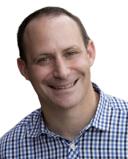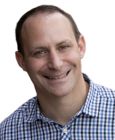Health
Can Technology Save Our College Students?
"Both/and" thinking to the rescue.
Posted November 23, 2022 Reviewed by Devon Frye
Key points
- As college mental health issues soar, solutions are being discovered through "both/and" thinking.
- "Both/and" thinking is an innovative strategy that embraces paradox and solves tough problems.
- "Both/and" thinking enables colleges to transcend scarce resources and complex challenges and target underserved students.

"All this one-on-one counseling is a waste of time. For every hour you spend at the individual level, you miss thousands of people."
Counseling psychologist Ben Locke still remembers how offended he was hearing this from a respected professor while interviewing for a doctoral program. It was as if all the future counseling he'd conduct with individuals in hospitals, group homes, community clinics, and even wilderness therapy were already pointless. How could the people responsible for teaching counseling’s promise be so cynical?
Despite his beard and Xennial status, Locke still has the boyishness of a perpetual student. Retelling the story, he is crushed yet again, imagining thousands of students falling through the cracks and slipping away from a clinician's tender-hearted care.
When he rose the ranks to director of Penn State's counseling center and founded the Center for Collegiate Mental Health (CCMH), a start-up inspired consortium of college counseling centers that uses real-time data from counseling centers to track and describe mental health trends in higher education, Locke slowly began to see a different picture.
Counseling centers were in trouble, seeing ballooning levels of demand and ever-growing pathology in their students. Think more students with prior suicide risk, hospitalizations, and medication combined with ever-increasing work, academic, and family demands.
But the more you threw at the system to buoy it—the more therapists you put in offices and on-call, the more prevention programs you designed to catch challenges early, the more you brought outreach to residence halls and classrooms—the more it kept sinking.
Over nearly two decades, CCMH data illuminated a surprising new reality: The kids weren’t alright, but it wasn’t just them. It was us and our either/or view of these problems themselves.
Two calls to action became clear to Locke. First, we must tackle college mental health as a complex population-level public health concern rather than focusing only on how many students you can get into therapy. Second, there is no single solution for all campuses, rather a broad range of strategies that go beyond the simple, old either/or fixes.
Drawing on management professors Wendy K. Smith and Marianne Lewis's both/and thinking—the embrace of leveraging paradox for more innovative results—Locke began to see a way to override the quick and mindless either/or thinking operating all over the college landscape.
Locke’s research found that while intuitively compelling, hiring more counselors simply cannot solve the entire problem. Again, that know-it-all professor’s words echoed in his ears. CCMH research found that each additional counselor can support an average of about 125 students per year, perhaps up to 300 students in a worst-case scenario. But, if you’re on a campus with 50,000 students and 20,000 need treatment, one additional counselor is a drop in the bucket. It's always a matter of both/and—increasing your numbers of clinical staff and programs while simultaneously targeting solutions at the population level in innovative and imaginative ways.
Either/or thinking just won’t do, yet so much of it is hiding in plain sight. Relentless student energy around identifying psychological disorders effectively worsens the very imbalance students wish to solve. They take a very personal scenario like suicide or a severe eating disorder—what statisticians affectionately call an n of 1 sample—and blow it up as if everyone has the same experience, and it’s just not true.
Another either/or trap is found in destigmatizing mental health. Some greatly benefit from softening shame around going for counseling and others respond by inadvertently pathologizing their healthy anxiety, sadness, and grief, making their problems much worse. Locke jokingly describes this as the “I don’t have butterflies in my stomach, I have a public speaking phobia” phenomenon. These people might have been just fine in years past or resolved their issues with ordinary support, but they are now funneled into an overtaxed treatment system.
Most recently, either/or thinking is cropping up in the debate about whether and how much to outsource college counseling. Many well-intentioned college counselors are concerned that this weakens and undermines college mental health while devaluing the unique community of college counseling itself.
Locke's latest project seeks to address all of these valid concerns. Capitalizing on the both/and thinking that has defined his career as a researcher, psychologist, and educator, he is answering hard-hitting questions: Is there a way to get past the zero-sum game of not enough counselors and too many students? Can you simultaneously make a dent at the population level while serving the most vulnerable sample of young adults? Is it possible to harness the scale and benefits of technology while still protecting against its toxic side effects?
Locke has found this in an anonymous online community available to more than 3 million students at over 350 institutions. Peers have 24/7 access to support, advice, and connection, all while being thoughtfully monitored and protected by a backdrop of mental health clinicians.
It's the best of both worlds, a place where members can access the choicest benefits of group and individual therapy—hope, perspective, empathy, validation, problem-solving skills, altruism, and group belonging—and better yet, from the most qualified and invested folks of all: their peers. Trained counselors, nurses, and psychiatrists are on duty 24/7 if folks need them but mostly operating in the background, carefully shaping the community and keeping a watchful eye to make sure everyone is benefitting from the community and that each individual's needs are visibly noticed.
See the both/and operating here?
Instead of focusing only on how few counselors you have, why not switch it up and encourage your students to seek and provide support to each other while you also grow your counseling capacity? Concerned about making sure the always online digital generation is safely monitored by experts in the field? Create a strategically designed global group of clinicians to shape, support, monitor, and swoop in when needed to ensure that the self-sustaining community is thriving. Worried about trolling and an addictive echo chamber of yes-men? Fashion a community of individuals who are invested and moved by the hopeful possibility of genuine help and connection and then use technology to help achieve that goal at scale.
Like any good paradox, that professor was both right and wrong, and Locke found creative ways to uncover just how. The challenge of working with the vast scope and changes facing college counseling rests on melding conventional truths with unconventional applications, the embrace of new technologies alongside traditional modalities, and having the willingness and foresight to be wrong and let the data lead the way for you to be right.
When many of us look at the problems befalling colleges these days, we too often focus on mere arithmetic and a zero-sum game that we are inevitably losing, and losing badly. Using both/and thinking allows us to recognize the calculus hidden in this new game we're playing and recognize it for what it is: not irreconcilable problems, but achievable possibilities we can keep building on if we’re self-reflective, savvy, and strategic.




